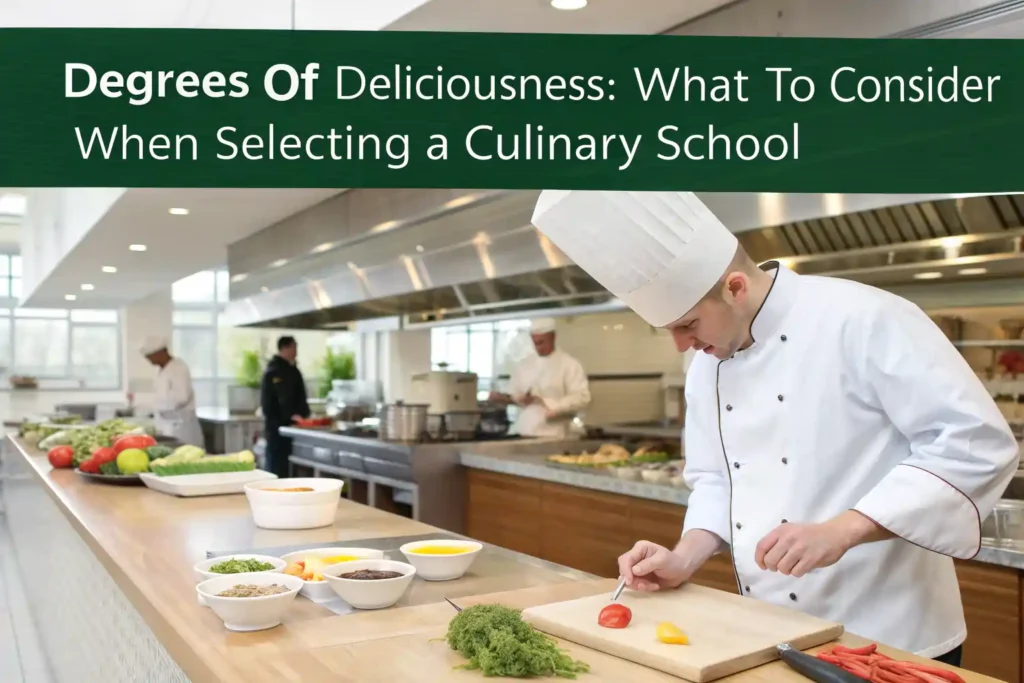Embarking on a culinary journey requires more than just a passion for cooking; it calls for formal training that hones your skills and deepens your understanding of the culinary arts. The path toward becoming a celebrated chef is often paved through a reputable culinary school.
Exploring Accreditation and Reputation of Culinary Schools
The accreditation status of a culinary school is a vital determinant of the quality of the education you can expect to receive. Accredited institutions have met specific standards for their curriculum, faculty, and student services, providing a level of assurance about the education on offer. When a school is recognized by respected bodies, it not only bolsters its credibility but also ensures that your qualifications will be honored by employers.
Reputation goes hand-in-hand with accreditation. A culinary school’s prestige is often built on the success of its alumni, the distinctions it has earned, and how it is perceived in the industry. Reviews and testimonials can shed light on these aspects, but it’s also wise to look into any awards or recognition the school has garnered over the years.
Reputation extends to the kind of networking and partnership opportunities a school can provide. A well-connected institution could offer invaluable links to the industry, which could lead to internships, apprenticeships, and employment opportunities upon graduation.
Gauging the Breadth of Culinary Programs Offered
The array of programs a culinary school offers can significantly affect your education. Some schools specialize in certain cuisines or techniques, which might be beneficial if you have a clear idea of your culinary direction. On the other hand, institutions with a broad range of programs provide the flexibility to explore various culinary fields before specializing.
An examination of curriculum content is also crucial. Does the school blend practical kitchen training with classroom-based learning about the science and business of food? A balanced approach equips students with a diverse skill set that is attractive to employers in the culinary sphere.
Beyond associate and bachelor’s degrees, consider whether a school offers continuing education opportunities, such as certificates or workshops, that can supplement your learning or aid in specialized knowledge after you begin your career. Culinary education should never truly end, as the industry constantly evolves with new trends and techniques.
Consider schools that encourage creativity and innovation within their programs. Culinary arts are as much about tradition as they are about evolution, and the right program should foster an entrepreneurial spirit, encouraging students to explore and create new culinary concepts.
Assessing the Quality of Faculty and Industry Connections
The faculty’s expertise at a culinary school can immensely impact your learning experience. Instructors with industry experience bring valuable insights into the kitchen classroom, often sharing real-world knowledge that can’t be learned from textbooks alone.
Faculty members who are active in the culinary industry can also serve as mentors and may provide networking opportunities that are critical in the early stages of a culinary career. They should also be accessible, offering guidance and support as you develop your skills and style.
Industry connections are another element to consider. Culinary schools with robust ties to local restaurants, hospitality venues, and professional associations can facilitate hands-on experience through externships, which are integral for practical learning and career development.
Seek out schools that regularly bring in guest chefs and industry experts for workshops, lectures, or demonstrations. These experiences can inspire students and offer a taste of the various culinary paths one can take post-graduation.
Considering the Culinary School’s Facilities and Resources
The quality of a culinary school’s facilities translates directly into the quality of education you’ll receive. Modern, well-equipped kitchens create a professional environment where students can learn the latest techniques with up-to-date equipment. Tour the campus to ensure facilities meet industry standards and that there is ample space for practical learning.
In addition to the kitchens, consider the range of resources available to students, such as libraries, study areas, and access to digital resources. A school that invests in its infrastructure is likely to also invest in its students’ overall learning experience.
An often overlooked but critical amenity is the school’s dining establishments. Some schools operate restaurants or cafes that are open to the public, providing students with a unique opportunity to gain experience in a real-world setting. This can be a substantial advantage in building confidence and competence before entering the workforce.
Overall, choosing the right culinary school is an intricate dish, requiring a blend of thorough research and personal reflection on one’s goals and preferences. The ultimate choice should align with your aspirations, learning style, and career ambitions, setting you on a path to culinary excellence and satisfaction.

